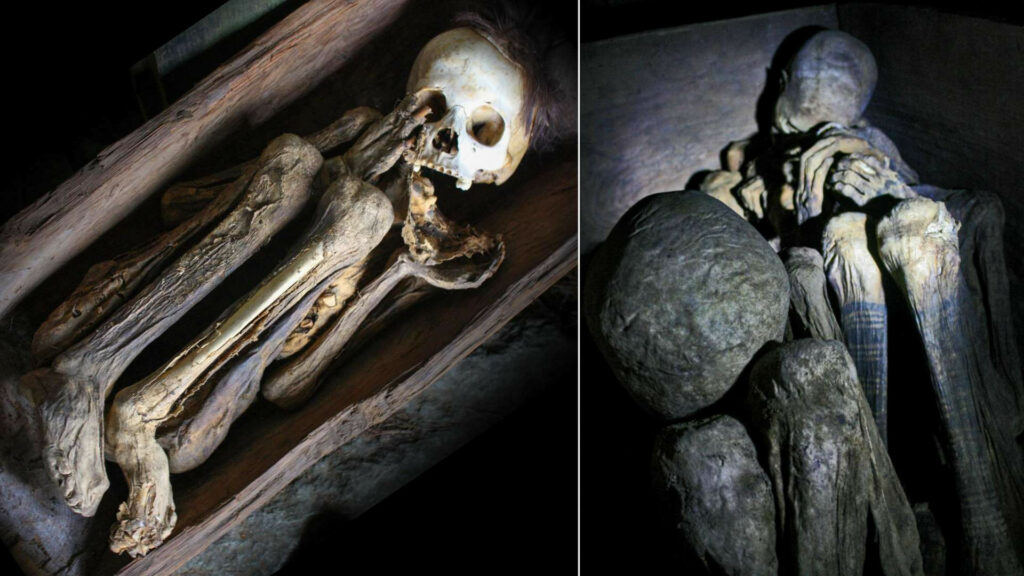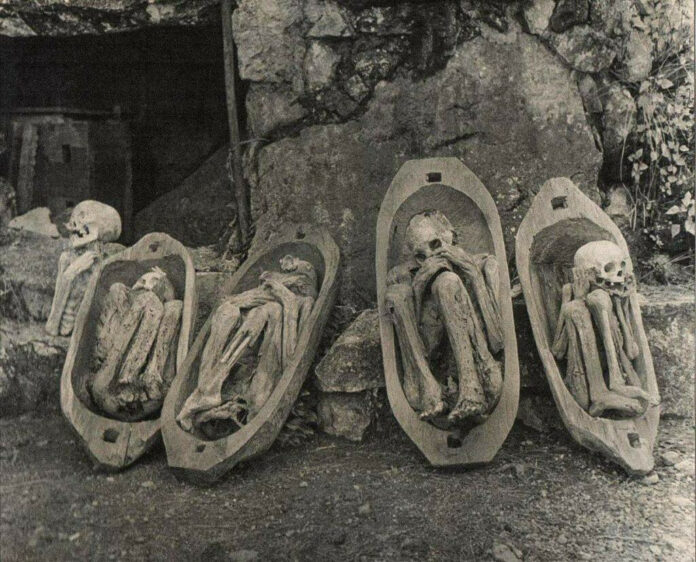Deep within the mysterious Kabayan Caves, an astonishing secret awaits those courageous enough to explore its ancient passages. Hidden in the dim recesses lie the charred human mummies, silent witnesses to a forgotten time. Shrouded in mystery and obscured by centuries, these unsettling relics have captivated scientists, anthropologists, and adventurers, beckoning them to unravel the enigma surrounding their existence. What ancient rituals, burial practices, or beliefs could have led to the creation of these macabre specimens?

The Ibaloi Fire Mummies
The Ibaloi Mummies, also known as the Fire Mummies, Beñguet Mummies, and Kabayan Mummies, are a fascinating archaeological find located in caves near Kabayan town in the Benguet province of the Philippines. Key caves include Timbac, Bangao, Tenogtol, Naapay, and Opdas. These sacred burial grounds housed the ancestors of the ancient Ibaloi people.

Discovered in the early 20th century, the Fire Mummies intrigued Westerners, though local communities had known of them for centuries. Lack of cave protection unfortunately led to many mummies being stolen. This prompted Monument Watch to designate the site as one of the world’s 100 most endangered.
The Fire Mummification Process
Scientists believe the Ibaloi tribe created the Fire Mummies between 1,200-1,500 CE in five Benguet towns, though some argue the process began much earlier around 2,000 BCE. Fire mummification was an intricate process that uniquely began shortly before death:
- The person consumed a highly saline solution to dehydrate the body
- After death, the body was washed and positioned seated over a fire to dry

- Tobacco smoke was blown into the mouth to further desiccate internal organs
- Herbs were rubbed on the body before placing it in a pine coffin in the caves
Looting, Vandalism and Preservation Efforts
As logging intensified in the area, revealing cave locations, looting and vandalism became common. Some visitors even graffitied the mummies. The notable mummy Apo Annu was stolen in the early 1900s and later returned due to belief in his supernatural powers.
Efforts have been made to preserve Kabayan’s history:
- In 1998, the World Monuments Fund included the Kabayan Mummies on their Watch List
- Funding was secured for emergency conservation and management planning
- Local authorities collaborated on a cultural awareness campaign
- Tourist facilities were built to regulate visits and prevent harmful intrusions
However, the Fire Mummies still face risks due to limited cave security. Officials know of 50-80 other mummy locations but keep them secret to prevent further vandalism. A small Kabayan museum displays a few mummies to raise awareness.
The Kabayan Mummy Burial Caves: A World Heritage Site
The Kabayan Mummy Burial Caves are recognized as National Cultural Treasures by the National Museum of the Philippines. They are also being considered for nomination as a UNESCO World Heritage Site to ensure the mummies’ preservation and protection against theft and vandalism.

A Sacred and Captivating Experience
Exploring the Kabayan mummy caves is a captivating journey through history, archaeology, and spirituality. Visitors can marvel at the Ibaloi people’s meticulous mummification techniques from centuries ago. The caves exude sacredness as the final resting place of the departed.
Approaching the caves and mummies demands the utmost respect and reverence for these symbols of a vibrant past that deserve preservation and appreciation. Venturing inside, one enters a realm where time stands still, connecting with ancestral spirits and the rich tapestry of Ibaloi culture.

